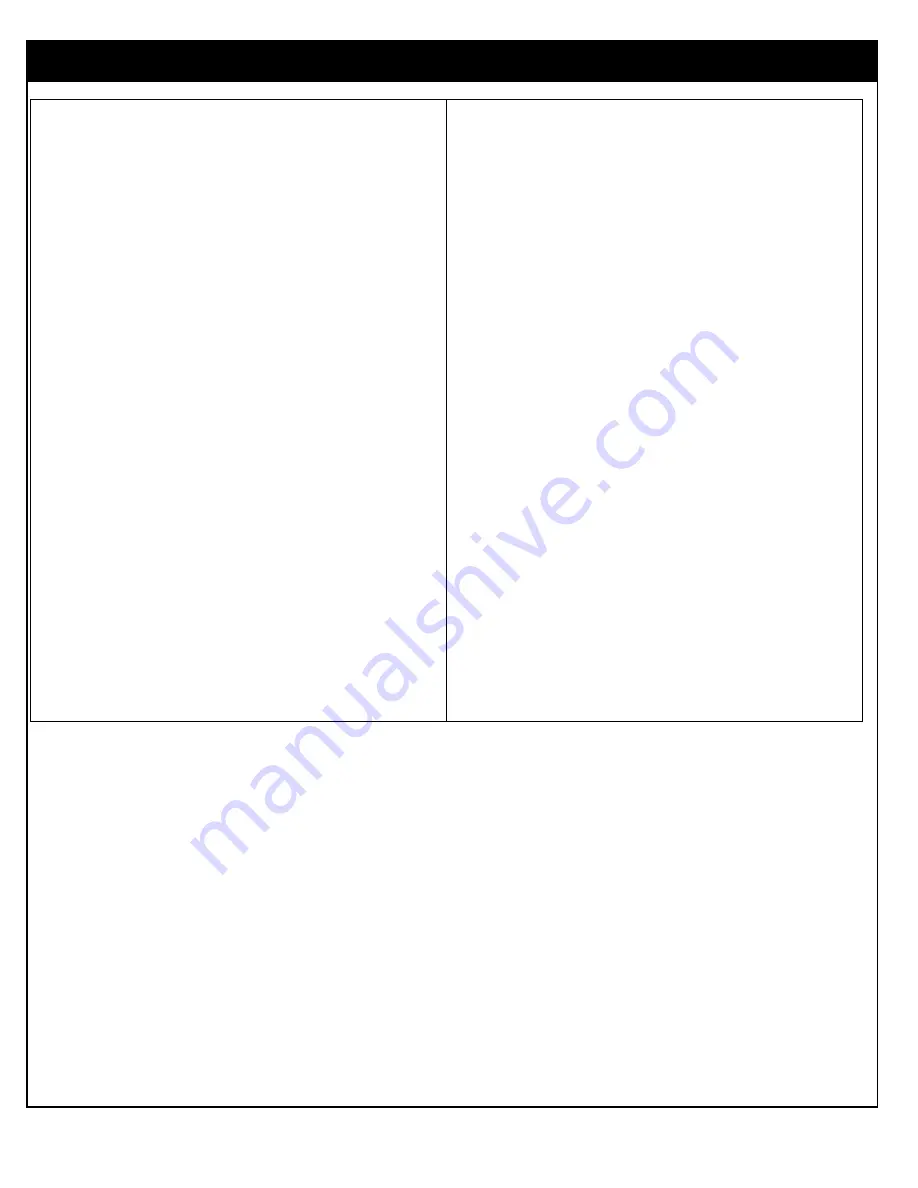
Final Checks
Installer:
Before leaving the appliance with the customer, you
must check the operation of the appliance.
*Check correct rating by clocking the appliance at 15 minutes.
(See label)
*Check flame description as seen on page 22. Adjust primary air if
required.
*Take time to go through the unit with the customer.
Note:
When first fired, the unit will produce an odour. This is
normal and is part of the paint curing process. It is recommended
that you open a few windows to ventilate the room. This will be
noticeable for at least 4 hours. During the first hour, smoke
detectors in the house may be set off.
*Following the initial burn-in period, the glass panel may require
cleaning.
Caution
:
Do not clean the glass when the
appliance is hot!
*When the appliance is fired from cold, the glass may fog up.
This is due to condensation and is normal.
*Make yourself familiar with these instructions before operating the
appliance.
*Check any loose electrical wires that may cause a shock.
*Check all around the appliance for gas leaks. If you smell gas,
follow the instructions on the front cover of this manual.
*Check the pilot light should be visible.
*Check to make sure that venting is secure.
*Check all external parts, such as grills, doors and control covers
to make sure they are attached and fastened properly
.
Caution:
Do not turn the unit off and on again
without a minimum of a 60 second wait.
*The appliance area must be kept clear & free from combustible
materials, gasoline, and other flammable vapors or liquids.
Log set & burner require no maintenance.
Cold Weather Operation
When using any gas appliance (LP or NG Fuels) water is a
byproduct of the combustion process. Under normal conditions,
this is expelled into the atmosphere and does not cause any harm.
In extremes of cold weather however, the vapors may condense
and freeze on any exposed surface it comes into contact with.
This can cause a problem by restricting or blocking the vent,
particularly with direct vent wall terminations as the exhaust is only
a few inches away from the outside wall surface. What happens to
the moisture after it leaves the vent cannot be controlled by the
manufacturer. To extend the vent further out from the wall can
sometimes be an advantage. Extending the vent out from the wall
can present other design problems such as ice falling from the
eaves above. It is the home owner’s responsibility to ensure that
there is not an excessive build-up of ice on the termination.
Caution: When operating your appliance
during cold weather, you must frequently
check the exhaust cap for excessive ice build-
up.
Operating Your Fire
The operating instructions are also on a chained plate inside the
control access door. For your safety, this appliance is fitted with a
flame supervision device which will shut off the gas supply if for
any reason, the pilot flame goes out. This device incorporates a
fixed probe, which senses the heat from the pilot flame. If the
probe is cool, the device will prevent any gas flow unless the
burner control knob is kept pushed in at the “PILOT” position.
When first turned on, the decorative flames will appear
predominantly blue. After approximately 15 minutes, the flames
will turn yellow.
18


































